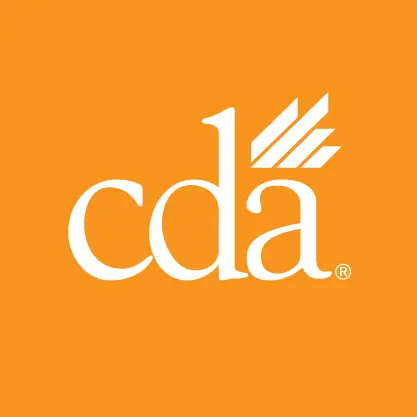Employment Practices
Laws & regulations, hiring/firing, office policies & manuals and performance
It can be challenging to balance the roles of healthcare provider and employer, but it doesn’t have to be. Find resources to help hire your dream team and keep your staff productive and happy. Get advice on how to write job descriptions, create applications, set office policies, establish alternative work schedules, and terminate an employee. In addition, all of this is supported by an Employee Manual that can be customized to your practice.

Employee Manual Resources
Exit Interviews
Exit interviews are a valuable tool for dental practice owners to gain honest feedback from departing team members. They help to uncover workplace trends, identify areas for improvement and strengthen employee retention strategies.
Face Covering Exemption Medical Certification Form
Employers should develop a policy to accommodate any worker who meets one of the exemptions from wearing a face mask. If a worker is unable to wear a mask due to a medical condition, they should be provided with a non-restrictive alternative, such as a face shield with a drape attached to the bottom edge, for example. Employers may provide this form to an employee to obtain medical certification from their health care provider supporting their request for an accommodation.
FAQs for Scheduling and Paying Employees in the Event of an Emergency
Unexpected emergencies can affect your practice and your employees. Below are a few common scenarios employers should know about paying and scheduling their California employees.
Final Pay Explained
California law requires employees receive their final paychecks within a certain time based on the reason they separated.
Finding the Right Associateship: Navigating Through the Interview Process
Provides extensive questions and considerations to guide you through the interview and associate agreement process.
General New Hire Toolkit
This toolkit covers recruiting, interviewing, hiring and onboarding, and provides a general list of basic hiring documents.
Harassment, Discrimination and Retaliation Prevention Compliance Guide
Outlines steps for developing policies, posting compliance, notice and distribution requirements, and employee training. CA employers have a duty to take reasonable steps to prevent and promptly correct discriminatory and harassing conduct.
Hiring an Associate: When is the Right Time?
Before bringing an associate into the practice, take the time to carefully examine the basis for this decision and evaluate the possible limitations of adding another dentist.
Hiring Associates Toolkit
Associates may be classified as either an independent contractor or an employee. This toolkit includes information to help you determine how to hire an associate.
Hiring Interns and Volunteers
Employers should proceed with caution when using unpaid interns or volunteers. Most interns are considered employees in the eyes of the law, which means you must comply with wage and hour laws, including paying them at least minimum wage.
Hiring or Becoming an Associate
Guidance for dentists looking to hire or become an associate. Hiring an associate will affect practice staff, the well-being of the business and the welfare of the patients. Take the time and research strategies prior to making any hiring decisions.
Hiring Temporary Employees Toolkit
Short-term employees are considered employees by the State of California and require additional documentation. This toolkit covers hiring, paying and terminating temporary employees.
Holiday Pay Frequently Asked Questions
Identifies California laws and clarifies office policies and benefits related to holiday pay throughout the year.
Involuntary Separation Letter
Use this letter (or Notice to Employee Change in Relationship resource) to record and document the employer initiated termination of an employee.
IRS increases the standard mileage rate for business use in 2025
Employers who use the IRS standard mileage to reimburse employees who drive their personal cars on company business rate will need to pay a little more in 2025. The IRS announced on December 19 that the standard mileage rate for business use will increase to 70 cents per mile on January 1, 2025, up from 67 cents in 2024. These rates apply to electric and hybrid-electric automobiles, including gasoline- and diesel-powered vehicles.
Job Descriptions: Best Practices & Sample Templates
Best practices for developing a job description outlining required qualifications, expectations and job duties for every employee. Includes sample descriptions for key positions in the dental practice.
Job Offer Letter: Exempt Employee
Use this job offer letter to provide the details of rate of pay, job title, classification, and start date and time when offering employment to a potential salaried employee.
Job Offer Letter: Nonexempt Employee
Use this letter to document an hourly employees terms of the employment relationship in advance of the employees start date. A written job offer must be provided prior to conducting a background check.
Job Offer Letter: Nonexempt Temporary Employee
Use this letter to provide the employee a written offer in advance outlining the terms and timeline of the employment relationship.
June 2023: Mandatory Update to Employee Polygraph Protection Act (EPPA) Poster
Although the Department of Labor’s website description for the Employee Polygraph Protection Act (EPPA) Poster still shows reference to the 2016 posting date, the poster itself has been added to reflect a “2/22 revision” update.
Lactation Accommodation: Sample Policy and Compliance Instructions
Both CA and federal law require you to reasonably accommodate employees who want to express breast milk at work.
Laws on employing minors in California
Information provided by CA Labor Commissioner's Office on employing minors. Employers in California must follow applicable laws when employing almost all minors under the age of 18.
Leadership and Wellness Webinar: Build a Dental Team That Loves Showing Up!
In this webinar, you’ll learn how to foster a positive workplace culture that enhances employee satisfaction and drives employee retention.
Leaves of Absence Laws that Apply to Employers in California
This resource list provides information about varied state and federal leaves of absence laws that may pertain to a covered employer. Leaves of absence laws cover a variety of specifically defined reasons. Covered employer, employee eligibility, job and benefits-protections and any pay requirements (if any) can vary by leave.
In some instances, several leaves of absence can apply to one employee for the same reason.
Any corresponding required notices can be found in the CDA Required Poster Set or in Required Postings in a Dental Office.
Mandated CalSavers Retirement Savings Program
Effective January 1, 2023, the State of California is now requiring all employer's to offer a retirement plan to their staff.
Mandatory COVID-19 Booster Policy
If you have made the decision to require your employees to receive the COVID-19 Vaccine Booster, you can use the policy addendum below as an addition to your existing vaccination policy.
